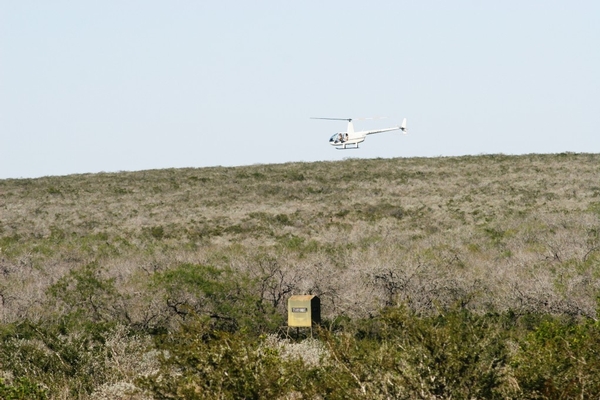
Tips to Aid Aerial Helicopter Surveys

For those choosing the aerial helicopter survey this year, consider the following tips:
- Begin the survey soon after daylight or in the evening for optimum visibility and animal observations. Avoid mid-day surveys unless absolutely necessary.
- Experienced pilots know how to fly game surveys, but some less experienced may need to be reminded to fly low and slow during the entire survey.
- Transects may be required on larger tracts, while complete coverage can be used on mid to smaller tracts.
- Most helicopter companies require a minimum charge to cover basic costs. On small tracts, make certain you understand what the minimum costs are compared to how long the actual survey will take.
- Helicopter costs are based on the size of the machine on a per-hour basis. The larger machines cost more than the smaller ones.
- The larger machines can haul more passengers (more eyes in the sky) and therefore, may increase your visibility and overall numbers of animals observed. Care must be taken to not double count animals. Communication among passengers is paramount.
- Smaller machines are more flexible, agile, and responsive than their larger counterparts.
- Observers should be kept constant, if possible, over time to keep the data more consistent.
- Very few people (or video cameras) can take good video footage from a helicopter survey. Vibrations and jerky movements are very hard to overcome with a video camera. Photographs are easier and can be taken quite successfully with a moderate zoom lens and a very fast film speed. Multiple photos need to be taken of each animal so that a select few may turn out well.
- On large tracts, individual pastures may need to be flown individually and treated as individual management units.
- Visibility will decrease along creeks and rivers with tall tree canopies. You may need to slow down and give the animals more time to “flush” where they can more easily be seen as they cross openings.
- It is recommended to count only those deer that are within 100-125 yards from each side of the helicopter. Avoid counting deer as they cross the horizon or are in the far distance.
- As an observer, watch straight out and back over your outside shoulder for deer. Avoid looking straight ahead and directly under the machine. The noise and motion will flush the animals as you pass over them.
- A clipboard, with data sheet secured at both ends, with large and wide data entry columns allows the observer to quickly record the required data with minimal effort. You need to keep your eyes in the brush and not on the data sheet.
- As with any survey, record everything possible—deer, turkey, coyotes, bobcats, stray cattle, feral hogs, javelina, etc. Helicopters are not cheap and the more data you can gather about a piece of property, the better your management will become.
- Be observant to overall range condition, brush distribution, water distribution, fencing (condition of, needs of, etc. ), and terrain while in the air. It will amaze you what you can see and learn from a brief helicopter ride.
All photo and content herein is copyrighted property of Spring Creek Outdoors, LLC and may not be copied/reproduced or otherwise used in any way without express written permission from Spring Creek Outdoors, LLC. All rights reserved.
Posted in: Deer Management, Surveys
